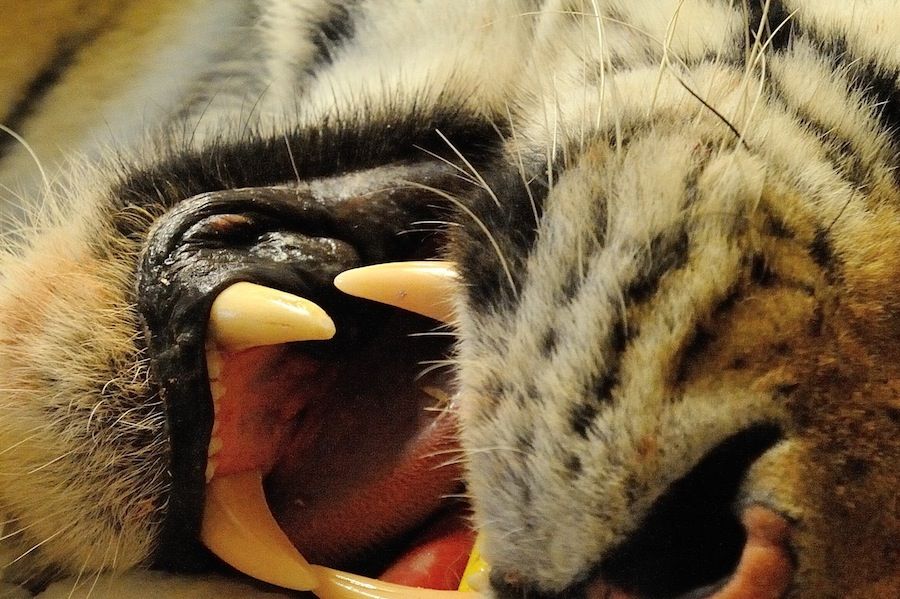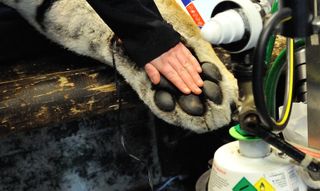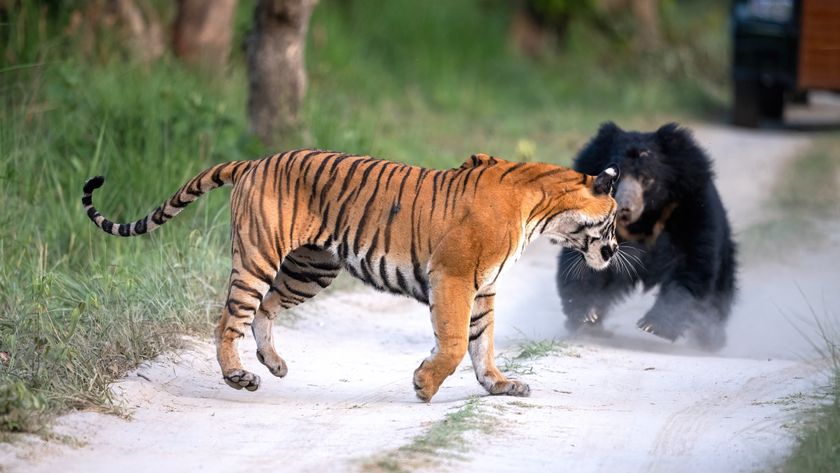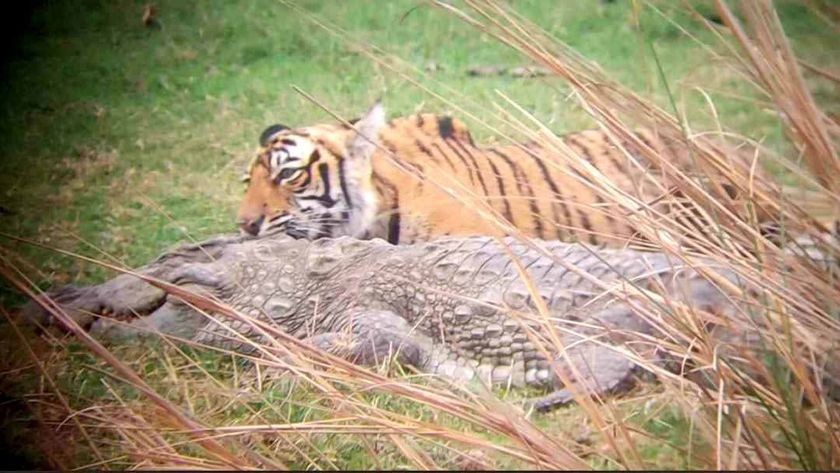How to Give a Tiger a Root Canal

Having a fearsome bite won't get you out of a root canal.
A 4-year-old male Siberian tiger named Marty had to undergo the dreaded dental procedure in his den at Scotland's Highland Wildlife Park on Wednesday (Dec. 18) after keepers noticed signs of trouble. Marty apparently had a small chip on his lower right canine and was starting to rely on the left side of his mouth while chewing, according to the Royal Zoological Society of Scotland.
With X-ray technicians, animal dentists and veterinarians on hand, zoo officials decided to anaesthetize the tiger to get a closer look at its tooth and treat it, if necessary. [Iconic Cats: All 9 Subspecies of Tigers]

"A problem for big carnivores like tigers and polar bears, the pulp layer of the tooth is only a couple of millimeters below the tip of the tooth, so even chipping a tiny bit of tooth off can cause problems as the pulp underneath is exposed and infection can set in," Douglas Richardson, head of living collections for the Highland Wildlife Park, said in a statement.
The pulp layer was indeed decayed in Marty's damaged tooth, so doctors flushed it out and replaced it with a cementlike substance during the two-hour procedure. As with humans who get dental fillings, it's hoped that the treatment will help Marty avoid tooth extraction in the future.
Root canal treatments are typically straightforward for people, but for an animal the size of Marty, the operation becomes "a complex affair," Richardson said, involving heavy planning and coordination.
And at 412 lbs. (187 kilograms), Marty's body presents a daunting amount of dead weight: It took six keepers to carry the big cat on a stretcher to a bedding area to be monitored after the tooth treatment. Keepers also took advantage of Marty's rare sedated state to perform an abdominal ultrasound and take blood and fur samples.
Sign up for the Live Science daily newsletter now
Get the world’s most fascinating discoveries delivered straight to your inbox.

Though initially unsteady, Marty was back on his feet soon after the procedure, zoo officials said. Similar to the doctor's orders for humans, the tiger will chew on smaller pieces of meat for a few days.
Siberian tigers (Panthera tigris altaica), also called Amur tigers, are the largest tiger subspecies. Males can weigh up to 660 lbs. (300 kilograms) and females up to 370 lbs. (170 kg). The animals can be found in parts of the Russian Far East and are considered endangered.
Follow Megan Gannon on Twitter and Google+. Follow us @livescience, Facebook & Google+. Original article on LiveScience.












